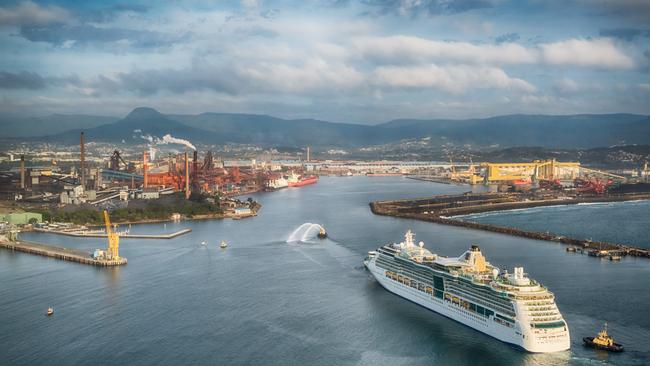Forrest’s eyes binding supply agreements after Port Kembla LNG plan gets NSW nod
Andrew Forrest is aiming for his planned LNG terminal to import gas for the first time by late 2020.

Andrew Forrest’s mooted LNG import terminal in NSW hopes to strike binding supply deals with industrial buyers after winning planning approval from the state, putting Australia on track to import gas for the first time by late 2020, despite being the world’s largest exporter of the fuel.
The iron ore billionaire is a high-profile backer of the $250 million LNG terminal that could supply up to 70 per cent of NSW’s gas needs, with some supplies likely to be shipped from Western Australia and even the US to help arrest falling domestic production from the southern states.
The Port Kembla plant is one of five LNG import terminals proposed for Australia’s east coast as part of efforts to ease a supply crunch that has seen prices soar in the past few years, squeezing the competitiveness of heavy industry reliant on the fuel.
After gaining NSW government approvals, Australian Industrial Energy now hopes to seal supply contracts with industrial customers by June, ahead of a mid-2019 final investment decision.
AIE is a consortium made up of Mr Forrest’s privately owned Squadron Energy, Japanese trader Marubeni and JERA, an LNG-buying joint venture between Tokyo Electric Power Co and Chubu Electric.
Fifteen industrial users signed an initial memorandum of understanding to buy gas from the LNG plant, which then moved into a similar number of gas supply agreements. AIE’s next challenge is to strike binding five-year deals with its prospective east coast customers.
Customers lined up include industrial players in NSW and Victoria, corporates and also customers with retail positions, with some buyers already stating a preference for greater supplies during the winter months, which AIE expects to be able to accommodate.
However, one sticking point may be price, with AIE offering deals in the $10-$12 a gigajoule range, still three to four times the historical rates, and potentially bettered by domestic offers, according to Credit Suisse.
“AIE’s terminal will likely require some industrial buyers to sign up for a term commitment, but it’s a struggle to see an industrial buyer locking themselves into years of import parity prices when they can contract cheaper prices today via domestic sources,” Credit Suisse analyst Saul Kavonic said.
“Unless AIE’s backers are willing to take on volume risk, it could be challenging to see the project get across the line.”
The high tariff linked to LNG import projects has also rankled some local users. Many are upset that while Australia last year became the world’s biggest LNG exporter, there’s now scant domestic supplies for big commercial users, with prices soaring to reflect the tight demand-supply equation.
Explosives maker Orica said last month it was weighing the future of its Newcastle ammonia plant, putting up to 300 jobs at risk, as the high price of gas renders its Kooragang Island facility uncompetitive.
AIE said some industrial users were clearly grappling with changes in the market.
“There are some who have been quite vociferous about pricing and have made public statements, and some of those customers may be struggling with the way the market is evolving, given their nature of their business particularly if they’re trade exposed,” Squadron chief executive Stuart Johnston said.
“But customers can fix a five-year contract on very transparent terms. People can look at the gas, the indexation, the price they’re paying for the LNG and work out that this is an infrastructure style approach. It’s open to all.”
Utility AGL Energy and big gas producer ExxonMobil have also flagged potential import terminals in Victoria while Japanese conglomerate Mitsubishi is backing a plan to import LNG at Pelican Point in South Australia.
The plans have been hatched as domestic gas prices have surged on a wide range of factors, including Queensland’s LNG export plants, the growing cost of developing new gas fields and onshore production restrictions in NSW, Victoria, South Australia and the Northern Territory.

